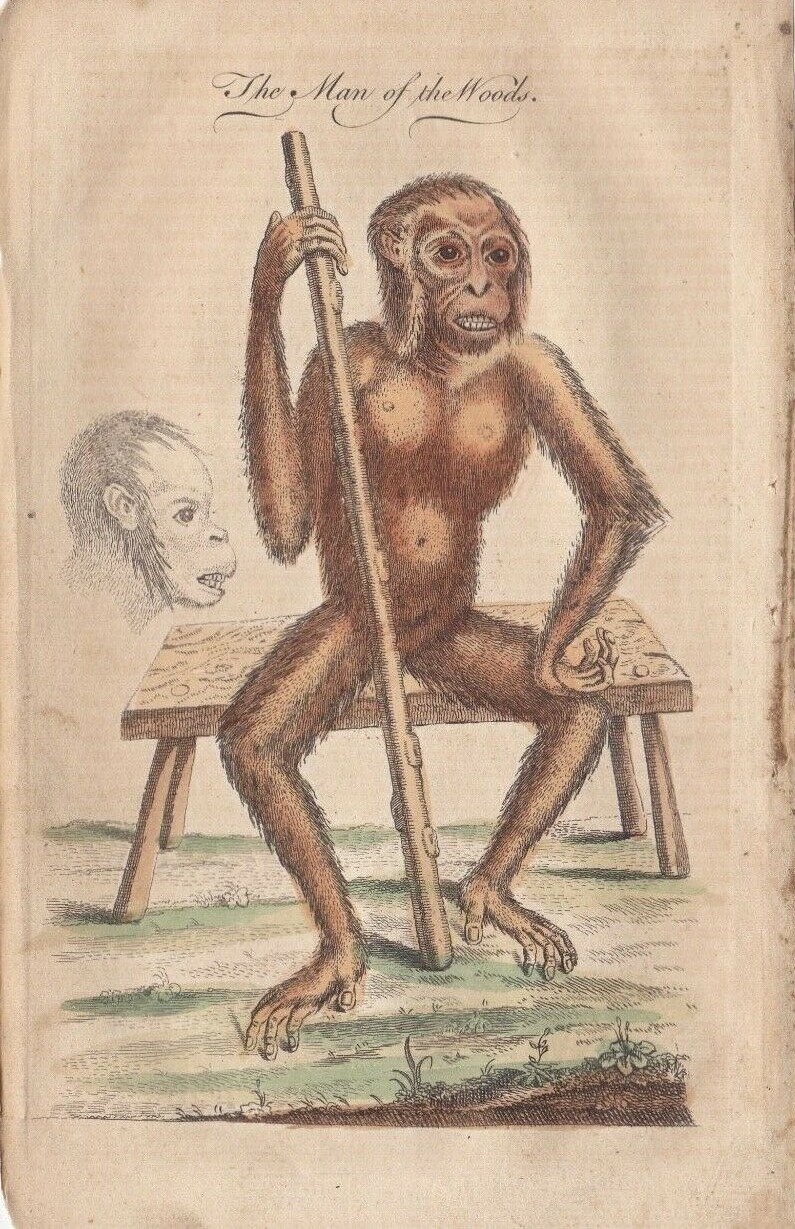|
Australopithecus Afarensis
''Australopithecus afarensis'' is an extinct species of australopithecine which lived from about 3.9–2.9 million years ago (mya) in the Pliocene of East Africa. The first fossils were discovered in the 1930s, but major fossil finds would not take place until the 1970s. From 1972 to 1977, the International Afar Research Expedition—led by anthropologists Maurice Taieb, Donald Johanson and Yves Coppens—unearthed several hundreds of hominin specimens in Hadar, Ethiopia, the most significant being the exceedingly well-preserved skeleton AL 288-1 (" Lucy") and the site AL 333 ("the First Family"). Beginning in 1974, Mary Leakey led an expedition into Laetoli, Tanzania, and notably recovered fossil trackways. In 1978, the species was first described, but this was followed by arguments for splitting the wealth of specimens into different species given the wide range of variation which had been attributed to sexual dimorphism (normal differences between males and females). ''A ... [...More Info...] [...Related Items...] OR: [Wikipedia] [Google] [Baidu] |
Pliocene
The Pliocene ( ; also Pleiocene) is the epoch in the geologic time scale that extends from 5.333 million to 2.58See the 2014 version of the ICS geologic time scale million years ago. It is the second and most recent epoch of the Period in the Cenozoic Era. The Pliocene follows the Miocene Epoch and is followed by the Pleistocene Epoch. Prior to the 2009 revision of the geologic time scale, which placed the fou ... [...More Info...] [...Related Items...] OR: [Wikipedia] [Google] [Baidu] |
AL 333
AL 333, commonly referred to as the "First Family", is a collection of prehistoric hominid teeth and bones. Discovered in 1975 by Donald Johanson's team in Hadar, Ethiopia, the "First Family" is estimated to be about 3.2 million years old, and consists of the remains of at least thirteen individuals of different ages. They are generally thought to be members of the species '' Australopithecus afarensis.'' There are multiple theories about the hominids' cause of death and some debate over their species and sexual dimorphism. Discovery In the late 1960s, the French paleoanthropologist Maurice Taieb started geological exploration of the relatively unexplored area of Ethiopia known as the Afar Triangle, located in the north of the country. Also known as the Danakil depression or Afar depression, this triangle is the lowest point in Ethiopia and one of the lowest in Africa. In 1972, Taieb invited Yves Coppens, a French paleontologist, Jon Kalb, an American geologist, and Donald Jo ... [...More Info...] [...Related Items...] OR: [Wikipedia] [Google] [Baidu] |
Orangutan
Orangutans are great apes native to the rainforests of Indonesia and Malaysia. They are now found only in parts of Borneo and Sumatra, but during the Pleistocene they ranged throughout Southeast Asia and South China. Classified in the genus ''Pongo'', orangutans were originally considered to be one species. From 1996, they were divided into two species: the Bornean orangutan (''P. pygmaeus'', with three subspecies) and the Sumatran orangutan (''P. abelii''). A third species, the Tapanuli orangutan (''P. tapanuliensis''), was identified definitively in 2017. The orangutans are the only surviving species of the subfamily Ponginae, which diverged genetically from the other hominids ( gorillas, chimpanzees, and humans) between 19.3 and 15.7 million years ago. The most arboreal of the great apes, orangutans spend most of their time in trees. They have proportionally long arms and short legs, and have reddish-brown hair covering their bodies. Adult males weigh about , whi ... [...More Info...] [...Related Items...] OR: [Wikipedia] [Google] [Baidu] |
Biped
Bipedalism is a form of terrestrial locomotion where an organism moves by means of its two rear limbs or legs. An animal or machine that usually moves in a bipedal manner is known as a biped , meaning 'two feet' (from Latin ''bis'' 'double' and ''pes'' 'foot'). Types of bipedal movement include walking, running, and hopping. Several groups of modern species are habitual bipeds whose normal method of locomotion is two-legged. In the Triassic period some groups of archosaurs (a group that includes crocodiles and dinosaurs) developed bipedalism; among the dinosaurs, all the early forms and many later groups were habitual or exclusive bipeds; the birds are members of a clade of exclusively bipedal dinosaurs, the theropods. Within mammals, habitual bipedalism has evolved multiple times, with the macropods, kangaroo rats and mice, springhare, hopping mice, pangolins and hominin apes ( australopithecines, including humans) as well as various other extinct groups evolving ... [...More Info...] [...Related Items...] OR: [Wikipedia] [Google] [Baidu] |
Sampling Bias
In statistics, sampling bias is a bias (statistics), bias in which a sample is collected in such a way that some members of the intended statistical population, population have a lower or higher sampling probability than others. It results in a biased sample of a population (or non-human factors) in which all individuals, or instances, were not equally likely to have been selected. If this is not accounted for, results can be erroneously attributed to the phenomenon under study rather than to the method of sampling (statistics), sampling. Medical sources sometimes refer to sampling bias as ascertainment bias. Ascertainment bias has basically the same definition, but is still sometimes classified as a separate type of bias. Distinction from selection bias Sampling bias is usually classified as a subtype of selection bias, sometimes specifically termed sample selection bias, but some classify it as a separate type of bias. A distinction, albeit not universally accepted, of sampling ... [...More Info...] [...Related Items...] OR: [Wikipedia] [Google] [Baidu] |
Gorilla
Gorillas are herbivorous, predominantly ground-dwelling great apes that inhabit the tropical forests of equatorial Africa. The genus ''Gorilla'' is divided into two species: the eastern gorilla and the western gorilla, and either four or five subspecies. The DNA of gorillas is highly similar to that of humans, from 95 to 99% depending on what is included, and they are the next closest living relatives to humans after chimpanzees and bonobos. Gorillas are the largest living primates, reaching heights between 1.25 and 1.8 metres, weights between 100 and 270 kg, and arm spans up to 2.6 metres, depending on species and sex. They tend to live in troops, with the leader being called a silverback. The Eastern gorilla is distinguished from the Western by darker fur colour and some other minor morphological differences. Gorillas tend to live 35–40 years in the wild. The oldest gorilla known is Fatou (b. 1957), who is still alive at the advanced age of 65 years. ... [...More Info...] [...Related Items...] OR: [Wikipedia] [Google] [Baidu] |
Robustness (morphology)
In biology, robustness is used to describe a taxon with a stronger and heavier build ( morphology) when compared to a related gracile taxon. The terms are used in contrast to one another. The term is used by physical anthropologists and paleoanthropologists to refer to a big-boned and muscular body. For example, members of the genus '' Sapajus'' have robust body types and are called the robust capuchin monkeys while members of the genus '' Cebus'' have gracile body types and are called the gracile capuchin monkeys. Male and female members of the same species may display sexual dimorphism and have robust and gracile morphologies. The terms "robust" vs. "gracile" are used in the context of human evolution, to distinguish: *"robust" vs. "gracile" australopithecines, see ''Paranthropus ''Paranthropus'' is a genus of extinct hominin which contains two widely accepted species: '' P. robustus'' and '' P. boisei''. However, the validity of ''Paranthropus'' is contested, and it ... [...More Info...] [...Related Items...] OR: [Wikipedia] [Google] [Baidu] |
Prognathism
Prognathism, also called Habsburg jaw or Habsburgs' jaw primarily in the context of its prevalence amongst members of the House of Habsburg, is a positional relationship of the mandible or maxilla to the skeletal base where either of the jaws protrudes beyond a predetermined imaginary line in the coronal plane of the skull. In general dentistry, oral and maxillofacial surgery, and orthodontics, this is assessed clinically or radiographically ( cephalometrics). The word ''prognathism'' derives from Greek πρό (''pro'', meaning 'forward') and γνάθος (''gnáthos'', 'jaw'). One or more types of prognathism can result in the common condition of malocclusion, in which an individual's top teeth and lower teeth do not align properly. Presentation Prognathism in humans can occur due to normal variation among phenotypes. In human populations where prognathism is not the norm, it may be a malformation, the result of injury, a disease state or a hereditary condition. Prognathism ... [...More Info...] [...Related Items...] OR: [Wikipedia] [Google] [Baidu] |
Homo
''Homo'' () is the genus that emerged in the (otherwise extinct) genus '' Australopithecus'' that encompasses the extant species ''Homo sapiens'' (modern humans), plus several extinct species classified as either ancestral to or closely related to modern humans (depending on the species), most notably ''Homo erectus'' and '' Homo neanderthalensis''. The genus emerged with the appearance of ''Homo habilis'' just over 2 million years ago. ''Homo'', together with the genus ''Paranthropus'', is probably sister to '' Australopithecus africanus'', which itself had previously split from the lineage of '' Pan'', the chimpanzees. ''Homo erectus'' appeared about 2 million years ago and, in several early migrations, spread throughout Africa (where it is dubbed '' Homo ergaster'') and Eurasia. It was likely that the first human species lived in a hunter-gatherer society and was able to control fire. An adaptive and successful species, ''Homo erectus'' persisted for more than a million ... [...More Info...] [...Related Items...] OR: [Wikipedia] [Google] [Baidu] |
Sexual Dimorphism
Sexual dimorphism is the condition where the sexes of the same animal and/or plant species exhibit different morphological characteristics, particularly characteristics not directly involved in reproduction. The condition occurs in most animals and some plants. Differences may include secondary sex characteristics, size, weight, colour, markings, or behavioural or cognitive traits. These differences may be subtle or exaggerated and may be subjected to sexual selection and natural selection. The opposite of dimorphism is ''monomorphism'', which is when both biological sexes are phenotypically indistinguishable from each other. Overview Ornamentation and coloration Common and easily identified types of dimorphism consist of ornamentation and coloration, though not always apparent. A difference in coloration of sexes within a given species is called sexual dichromatism, which is commonly seen in many species of birds and reptiles. Sexual selection leads to the exaggerat ... [...More Info...] [...Related Items...] OR: [Wikipedia] [Google] [Baidu] |
Species Description
A species description is a formal description of a newly discovered species, usually in the form of a scientific paper. Its purpose is to give a clear description of a new species of organism and explain how it differs from species that have been described previously or are related. In order for species to be validly described, they need to follow guidelines established over time. Zoological naming requires adherence to the ICZN code, plants, the ICN, viruses ICTV, and so on. The species description often contains photographs or other illustrations of type material along with a note on where they are deposited. The publication in which the species is described gives the new species a formal scientific name. Some 1.9 million species have been identified and described, out of some 8.7 million that may actually exist. Millions more have become extinct throughout the existence of life on Earth. Naming process A name of a new species becomes valid (available in zo ... [...More Info...] [...Related Items...] OR: [Wikipedia] [Google] [Baidu] |
Fossil Trackway
A fossil track or ichnite (Greek "''ιχνιον''" (''ichnion'') – a track, trace or footstep) is a fossilized footprint. This is a type of trace fossil. A fossil trackway is a sequence of fossil tracks left by a single organism. Over the years, many ichnites have been found, around the world, giving important clues about the behaviour (and foot structure and stride) of the animals that made them. For instance, multiple ichnites of a single species, close together, suggest 'herd' or 'pack' behaviour of that species. Combinations of footprints of different species provide clues about the interactions of those species. Even a set of footprints of a single animal gives important clues, as to whether it was bipedal or quadrupedal. In this way, it has been suggested that some pterosaurs, when on the ground, used their forelimbs in an unexpected quadrupedal action. Special conditions are required, in order to preserve a footprint made in soft ground (such as an alluvial plain or a ... [...More Info...] [...Related Items...] OR: [Wikipedia] [Google] [Baidu] |








